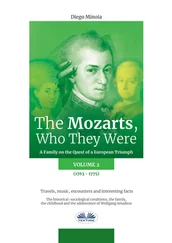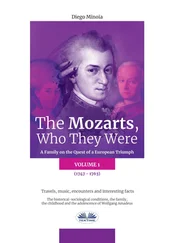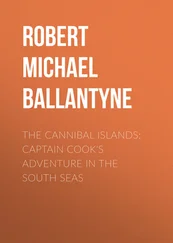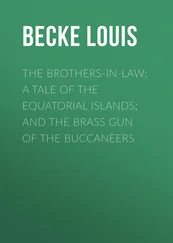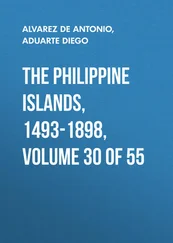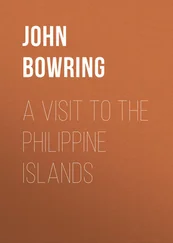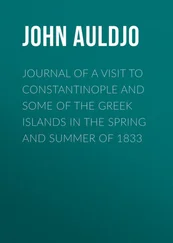Karatsu is a town in Hizen, north of Nagasaki; it possesses large deposits of coal and kaolin. It was formerly called Nagoya.
The shôgun at that time was Hidetada (1605–1623); but his father Iyeyasu, although nominally retired from the government, still inspired its proceedings in great degree, until his death in 1616.
For description of the Kuwantô, see Vol. XVI, p. 47. This group of provinces lies near the center of Hondo, and includes the city of Tôkio (Yedo).
According to Rein ( Japan , p. 304), he had put away his Christian wife to marry a daughter of Hidetada, and had become an apostate. Then he removed his residence from Arima to Shimabara, and began a fierce persecution of the Christians.
Evidently referring to Santiago de Vera.
Notwithstanding this fierce persecution – which, thus begun, culminated in the massacre of Shimabara (1637), and lasted as long as Christians could be discovered by the Japanese authorities – a considerable number of Japanese converts maintained their Christian faith, unknown to their rulers, handing it down from one generation to another until 1868, when their existence became known to the government, and for a time they were exiled from their homes, but were restored to them a few years later. This Christian church was at Urakami, about seven miles north of Nagasaki.
Rein states ( Japan , p. 306) that there were 22 Franciscans, Dominicans, and Augustinians (agreeing with Aduarte’s total), 117 Jesuits, and nearly 200 native priests and catechists; and that these were shipped to Macao. Murdoch and Yamagata say ( Hist. Japan , p. 503) that 63 Jesuits were sent to Macao; and 23 Jesuits, all the Philippine religious, and several distinguished Japanese exiles, to Manila.
Cf. Vol. IX, p. 68, for mention of earliest printing in the islands.
See Vol. XII, p. 222.
Angelo Orsucci e Ferrer was born in Lucca, Italy, in 1570, also entering there the Dominican order. Hearing of the Filipinas missions, he went to Valencia, in Spain, to join them, and arrived at Manila in 1602. He labored successively in the Cagayán and Bataán missions, and in 1612 went to Mexico to take charge of the Dominican hospice there. In 1615 he returned to Manila, conducting the mission band which Aduarte had brought to Mexico. He went again to Bataán for a time; but, hearing of the persecutions in Japan, determined to go thither, reaching that country in August, 1618. In the following December he was arrested, and imprisoned in Omura. He remained there nearly four years, and was burned alive on September 10, 1622. He was beatified in 1867.
See Reseña biográfica , i, pp. 211–214.
This was Juan de Silva, who died on April 19, 1616 (see Vol. XVII, p. 279).
A letter written by the Franciscan Fray Pedro de Alfaro to Fray Juan de Ayora, commissary in Manila, under date of Canton, October 13, 1579, and existing (in copy) in Archivo general de Indias (with pressmark, “Simancas-eclesiastico; cartas y expedientes de personas eclesiasticas vistos en el consejo; años 1570 á 1608; est. 68, caj. 1, leg. 42”), says of the Ilocos district: “Also it should be noted by your charity and the superiors who shall come that the province of Ylocos is the destruction and sepulcher of friars; for it is known how the first who went there returned, while I found the next ones, although they had come there so short a time before, with very ill-looking, flabby, and colorless countenances, and brother Fray Sebastian (may he rest in glory), smitten with stomach trouble. His sickness began there, and there was its ending. In consideration of this, and of the common rumor and report of all, I do not believe that it is a district where we can live.” The sick friar here mentioned was Sebastian de Baeza, who, at the time Alfaro wrote, had just died on a ship in Canton Bay.
Melchor Manzano came to Manila in 1606, and ministered in the Cagayán missions until he was chosen provincial in 1617. In 1621 he was appointed procurator of the province at Madrid; and he died in Italy, about 1630, as bishop-elect of Nueva Segovia.
After the battle of Sekigahara (1600) Iyeyasu had left Hideyori (the infant son of Hideyoshi), with his mother, in the castle of Osaka. After this child grew to manhood, he incurred the jealousy of Iyeyasu, which was doubtless aggravated by his intimacy with the Jesuits, and the shelter given by him to many discontented Japanese, both heathen and Christian. Armies were raised on both sides, and on June 4, 1615, the castle of Osaka was carried by assault, and burned, Hideyori and his mother both perishing. See Murdoch and Yamagata’s full account of this war, its causes, and its immediate results (Hist. Japan , pp. 507–567); cf. Rein’s Japan , p. 306.
i. e. , “the lord shogun;” it is only a title of honor, not a personal name. It here refers to Hidetada, who had been associated with his father Iyeyasu in the government.
Later (at the beginning of chap. xiiii) Aduarte states that under Safioye were two officials in charge of the Nagasaki government – Antonio Toan, a Christian; and Feizó, a renegade Christian. After Safioye’s death, dissensions arose between these two; and finally the emperor made Feizó and Gonrozu (a nephew of Safioye) joint governors of the city, who proceeded to persecute the Christians with renewed severity.



